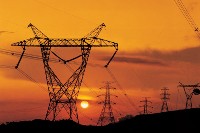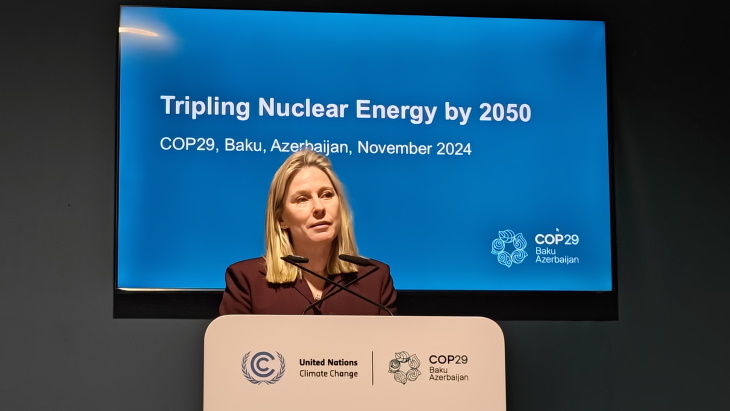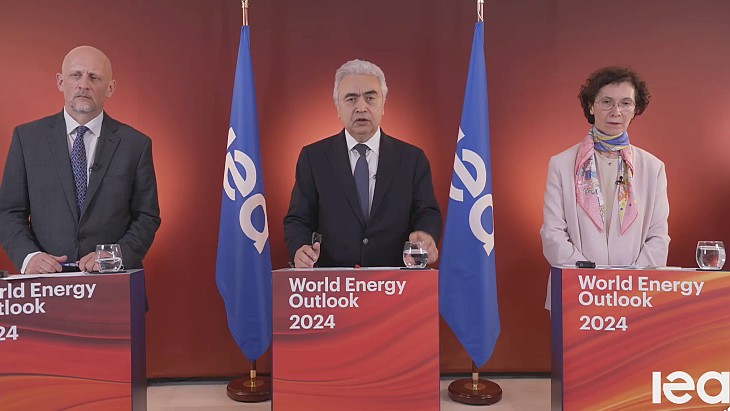Power executives' climate change proposals
![]() Nuclear power is among the technologies ready to fight climate change and its wide deployment should be facilitated now, according to top electricity companies.
Nuclear power is among the technologies ready to fight climate change and its wide deployment should be facilitated now, according to top electricity companies.
Nuclear power is among the technologies ready to fight climate change and its wide deployment should be facilitated now, according to top electricity companies.
 |
| The report authors represent 10% of global power generation capacity and supply over 300 million customers |
Asserting that there is no single solution to climate change problem, Power to change: A business contribution to a low-carbon electricity future, gives a technology-by-technology analysis of what governments and businesses must do in order to make best use of current and future equipment.
The report was compiled by executives from power companies including Electricité de France, Eskom, GdF Suez, Kansai Electric Power Company, Statkraft and Tokyo Electric Power Company. The CEOs said their firms bear a "front-line responsibility in the urgent global struggle against climate change" and called for progressive decarbonisation of power supplies, more efficient end use and the substitution of electricity for fossil fuels.
Working towards emissions reductions of 14 to 18 billion tonnes of carbon dioxide per year by 2050, the report specified that governments and businesses act together to facilitate technologies that are ready for use now as well as those that are sometimes competitive and those that may be ready only in decades to come. This would provide a "continuum of support... and certainty" for technology vendors, power sector planners and policy-makers into the middle of the century.
Current and future power technologies are placed into four groups. The first contains existing mature and competitive generation methods. Nuclear power features in this category, along with large hydo, combined-cycle gas turbines and energy saving devices like compact fluorescent lamps. The report says these technologies "urgently require regulation that builds public acceptance and fosters successful implementation at a larger scale."
For nuclear power, standardization of reactor design is seen a a key to competitiveness, and steps are already underway to achieve this in industry. Allowing utilities to use suitable business models for new developments should be enough to incentivise nuclear deployment, the report said, in the context of an implicit or explicit price on carbon dioxide. Meanwhile, governments must maintain stable and predictable licensing and safety regimes. Nuclear power could provide 14-15% of the emissions savings that are required, while producing 19-23% of electricity, under the report's scenarios.
In the second group are technologies that would be competitive, were costs for carbon dioxide emissions included in power prices. This includes ultra-supercritical pulverized coal and wind power in the best locations.
A third group contains technologies like onshore wind power and ground-source heat pumps that are currently far from competitiveness and need support from mass-deployment schemes, and feed-in subsidies.
Lastly are technologies with great promise which are as-yet far off. This includes carbon capture and storage, which could become competitive around 2023, and Generation IV nuclear power which could come in after 2030. These require direct and coordinated public research and development.
Regarding the deployment of existing technologies, the report praised the Clean Development Mechanism under the Kyoto Protocol. This allows countries with emissions reduction commitments to invest in projects that reduce emissions in other countries. Currently nuclear power projects are excluded from the CDM, but the report called for change after the 2012 commitment period: "There should be no exclusions of low-carbon technologies from the CDM or future mechanisms," it said.

_99697.jpg)








_50521.jpg)

